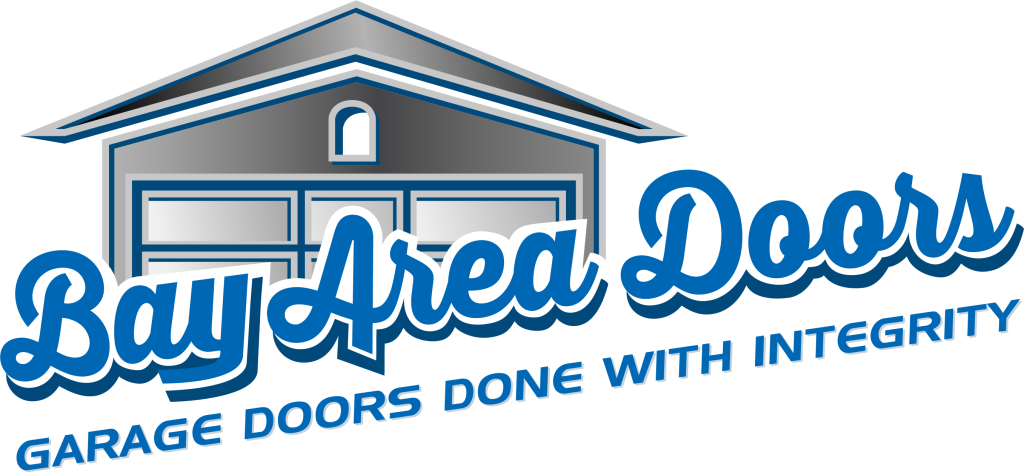Key Takeaways
- If your garage door has jumped off track, don’t panic—but don’t zone out either. You need to respond with a clear head and a plan. First things first: snap out of it and stay alert. Unplug the opener immediately and make sure the area is clear of people, pets, and anything else that could get damaged. Only then should you assess the situation or call in the pros.
- Garage doors can go off track due to accidental impacts, worn rollers, obstructed tracks, cable problems, and general misalignment, which is why it’s crucial to regularly inspect and maintain the door.
- Even a DIY garage door off-track repair should not be attempted without following safety procedures, having the right tools, and keeping notes about what repair step you need to do next so you don’t skip something important.
- Neglecting symptoms of defective tracks can result in life-threatening safety risks such as unexpected door drop, component failure, and property damage, and possibly even voiding the manufacturer’s warranty.
- Preventive maintenance, like cleaning, lubrication, inspection, and balance testing, is key for maximizing the life and reliability of your garage door system.
- When in doubt about whether a repair might void your warranty, always seek out a professional to help — it’s safer, and might keep you in the good graces of the manufacturer, as well!
Garage door off-track repair refers to garage doors that have become loose from their tracks and stop opening and closing properly. A door off its track can stick, hang at an angle, or produce harsh grinding noises when operated. Worn rollers, bent tracks, or obstacles in the path cause the problem. Repairing your garage door off track. Mending this quickly prevents larger injuries, such as torn springs or broken cables. Gadgets such as pliers, screwdrivers, and a level assist with minor repairs, but major problems may require an expert technician. For the rest of us, understanding the symptoms and causes assists in identifying potential issues early. In the following installments, steps and tips will demonstrate simple methods to re-track a garage door.

Your First Response to an Off-Track Door
A garage door that’s slipped off its track is a safety hazard and a frequent source of anxiety, but knowing the right first response can keep your loved ones and belongings safe and prevent additional damage. Doing so, quick and methodical, is the secret to ensuring the problem does not escalate and that repairs–professional or do-it-yourself–can be initiated safely and efficiently.
Stop Everything
Halt any garage door movement immediately. Do not press the opener switch or remote — forcing the door open or closed can exacerbate the track issue or even break your door panels. Consider the location of the door. Verify that it is not crooked, has visible gaps, or that the rollers are off-track. Sometimes, impact—say, bumping the door with a car—can knock the door off track. Inform everyone in the vicinity that you’ve GOT A PROBLEM. Keep them clear and don’t let them try to use the door while it’s off track. There’s a high risk of injury or additional property damage at this point.
Secure The Area
Remove everything in and around the garage door — bikes, tools, or boxes — to establish an inspection/repair ‘safe zone’. If you have cones or any type of barrier, put them next to the door to keep others away. That’s crucial for houses with kids or dogs—those little buggers can’t read warning labels. You require a secure workshop. Ensure nothing is obstructing your motion, and you can get to the trackside area.
Disconnect Power
All garage doors have a power source—typically a plug or wall switch. Unplug it so you don’t accidentally turn it on. Turn off the circuit breaker if additional safety is required. Always verify that your door opener is powered down completely before approaching any moving component. Or you could get shocked by live wires or systems.
Do Not Operate
- If it’s an off-track door, don’t attempt to lift or close it yourself.
- Don’t use the opener until it’s mended!
- DO call for help if it’s too heavy a door.
- Do keep others informed and away from the door.
Know that you can make repair prices more expensive by kicking the door—these typically fall between $125 and $350. Resume using the door only after it has been inspected and repaired, either by you (if you’re adept) or a professional.
Why Your Garage Door Derailed
There are multiple causes for a garage door to fall off its tracks. This can make the door dangerous and difficult to operate. Understanding what causes derailment can aid in addressing the issue and maintaining your door’s performance.
Accidental Impact
Door derailment occurs when a car or bike slams into the garage door. Even a soft whack from a car or a heavy box can bend the tracks or dislodge rollers. You could notice dents, bends,or scratches on the metal tracks. If someone bangs the door or scoots big items around without sufficient clearance, this can cause the door to derail. To help prevent these issues, maintain a clutter-free garage and remind everyone to handle the door with care when opening and closing.
Worn Rollers
Rollers are important components that assist the door in sliding up and down. When these rollers become old, cracked, or stuck, the door can drag on one side or jump off the track. Some indications of worn rollers are loud squeaks, uneven door movement, or rollers that appear chipped. If you spot any of these, switch the rollers immediately. The use of premium nylon or steel rollers can not only endure longer but also provide a more fluid motion, reducing the chance of derailment.
Obstructed Tracks
It’s typical for dirt, pebbles, or other small things to get into the tracks. Even a small stone can halt those rollers, causing your door to jam or derail. Check the tracks frequently for leaves, sand or any other object. Brush or cloth to clean, flashlight to scan for sneaky bits, particularly in the back or tight spaces. Maintaining clean tracks allows the door to operate longer and better.
Cable Issues
Cables are a big role in keeping the door balanced. If you notice frayed or loose cables, the door can hang unevenly and drift away from the track. Worn out cables should be replaced immediately to avoid larger issues. Check cables to be tight (but not overly tight), and attach safety cables to extension spring systems for added security.
Poor Alignment
Misaligned tracks, which make it easy for doors to slip off. Use the level to see if the tracks are vertically aligned. If they’re not, then line the tracks back up by adjusting the bolts. Warped or wrongly set tracks, sometimes from bad installation, can make doors go askew. Alignment is important, so check it often, especially after any kind of impact.
The DIY Garage Door Off Track Repair Guide
A garage door that falls off track is one of the most common household issues around the globe. You can repair it yourself with caution and the proper method, but safety always comes first. Here is a structured step-by-step guide:
- Disconnect the garage door from the opener before starting.
- Wear eye protection and remove kids and pets from the area.
- Collect pliers, adjustable and torque wrenches, a rubber mallet, flashlight, sturdy ladder, clamps and lubricant.
- Carefully inspect tracks, rollers, and cables for visible damage.
- Secure the door using clamps or vice grips.
- Loosen bolts on the tracks just enough for adjustment.
- Lightly hammer bent tracks back with a rubber mallet or hammer and block of wood as necessary.
- Realign rollers into their tracks.
- Tighten bolts to secure the tracks.
- Lubricate tracks, rollers, and hinges.
- Test the door manually for smooth movement.
- If cables are loose or parts badly bent, quit and ring a pro.
1. Safety First
Wear gloves and safety goggles before you begin. This protects your hands and eyes from sharp edges or debris.
Keep kids and pets out of the working area. Garage doors can move unexpectedly during repairs and cause injuries. Adhere to manufacturer safety guidelines. This avoids any potential accidents and ensures everyone’s safety while you’re working.
2. Gather Tools
Get all the tools you require. These are pliers, a rubber mallet, wrenches and a flashlight for dark corners.
If your garage door is tall or you need to reach high locations, grab a strong ladder. Have tools close at hand so you don’t make unneeded trips.
3. Inspect Damage
Inspect the tracks, rollers and cables. Inspect for rust, bends or wear. If you notice anything that seems amiss—such as a loose cable or severely-bent track—make note of it.
Snap a few photos or make some notes. This assists you in monitoring what you’ve checked and ensures you don’t overlook anything. If anything appears too beat up or if cables are slack, make sure to call in a pro.
4. Secure The Door
Clamp the door in place with vice grips. This prevents it from sliding around and liberates your hands.
Make sure the door can’t slip while you fix the tracks. Don’t start loosening stuff until you’ve tested the door is balanced.
A stable door is a safe door.
5. Loosen Track
Loosen (but don’t remove) bolts on tracks with adjustable wrench. Furthermore, keep the tracks supported so they don’t drop or twist. Be sure to proceed slowly and gently so you don’t bend the metal.
6. Realign Rollers
Use pliers to direct each roller into its track. Make sure all rollers are set right for a smooth roll.
Look for dirt or other small obstructions in the tracks. Rollers — Move rollers back and forth by hand to check for smooth movement and alignment.
7. Tighten Track
Once aligned, tighten the bolts. Use a torque wrench if you have one to ensure everything is tight but not over-tight. Test the tracks once again–they must be straight and firm.
8. Test Manually
Manually lift the door to test. It would stick and scrape as you moved it up and down. Listen for scraping or grinding. If it sounds strange, it’ll need more adjustment.
Lubricate all moving parts for best performance. Most repairs are 30 minutes to two hours. If you’re not sure or notice significant damage, call an expert.

The Hidden Dangers of a Faulty Track
A garage door off its track isn’t just inconvenient. A defective track places both safety and property in jeopardy. Left unchecked, these issues multiply and can even break warranties.
Sudden Collapse
When a garage door slips off track it can come crashing down at any time. With the door’s weight—sometimes exceeding one metric ton—even a small fall is potentially life threatening. Anyone in the vicinity is at risk of being harmed, particularly if the cables were to break or the motor were to seize.
All fixes are with caution The wrong band-aids can do more harm than good, causing haphazard break-downs. Families should be aware never to slam a closed door or attempt to move one manually. Educate the entire household about the hazards – particularly children, and stay away from a crooked or stuck door. If a gap develops on one side or the door wobbles, take immediate action. Postponing repair allows minor problems to morph into major safety concerns.
Component Failure
A benign issue such as a frayed cable or bent track has a tendency to disseminate. If one side’s cable goes, the other soon bears too much load. This can snap the second cable, and your door will be inoperable. Inspect all components – the springs, tracks, rollers and cables – for wear or rust.
Swap out bad parts the moment you discover them. Don’t wait for the entire system to fracture. Overlooking an inexpensive repair today can translate into costing you a lot more later to replace the entire door or motor.
Property Damage
Your garage door — off its track — can pummel your car, ruin the frame, or even drop on storage. The price tag on repairing a dented car or broken wall can be pricey.
Look for risks: is the door leaning or not closing fully? Even minor signs indicate something’s amiss. A lopsided door makes your garage easy to break into!
Avoid this by keeping the door clean, lubricated and inspected. It’s a little thing that protects your garage.
Don’t Void Your Warranty Over a Quick Fix
DIY repairs might seem like a smart way to save a few bucks, but here’s the catch: many garage door manufacturers will void your warranty the moment you tamper with the track or major components yourself. That “easy fix” could end up costing you a lot more down the line.
Warning: Read the fine print before touching anything. If there’s any doubt, don’t risk it—call a certified technician instead. And whatever you do, keep every receipt and service record. If you ever need to make a warranty claim, you’ll want proof that you played by the rules.
Preventing Future Track Problems
Avoiding future track problems is really all about diligent preventative maintenance. Tackling problems early, knowing the causes such as impact damage, and sticking to a routine all prevent expensive repairs and hazards. Be preemptive and construct habits that maintain the system working nicely.
- Clean tracks and rollers each month to clear debris that can impede movement. Wipe with a wet cloth and use a light non-corrosive metal cleaner.
- Check for loose bolts or worn rollers, swapping out any parts that show signs of wear promptly to keep issues from becoming bigger.
- Lubricate rollers, hinges and springs every three months with a garage door lubricant. This keeps components gliding and prolongs their lifespan.
- Test the balance and alignment twice a year with a level. Turn spring tension if the door lifts or drops unevenly.
- Have pro maintenance checks annually or bi-annually. A trained technician will notice potential problems before they strike and may even recommend such upgrades as safety cables for extension springs.
- Teach everyone safe operation – for example, unplug the opener before repairing and when it jams don’t force the door.
Regular Cleaning
Minimize track problems by keeping the track system clean of dirt, leaves and small stones. Clean it at least once a month. Brush or cloth away buildup, then wash the tracks in a non-corrosive solution. Check your floor and garage clutter that could cause future track problems. A clutter-free neighborhood prevents jacks and keeps the gate turning square.
Lubrication Schedule
A fixed lubrication schedule is essential to reduce friction and wear. Spray a little good garage door lubricant on the tracks, rollers, and hinges. Be sure to wipe off the excess – it will catch dust. If the door squeaks or moves slowly, tweak the regimen and check for trouble.
Routine Inspection
Inspect your tracks, rollers, and hardware every 2–3 months for misaligned tracks, bent rollers, or loose hardware. Watch for early signs of wear, like scraping or uneven motion. Note problems and resolve them immediately. Do not just leave it to you, get everyone in the household involved, then any change gets detected quickly.
Balance Test
Open the door half way and test to see if it remains. If it doesn’t, then spring tension or alignment might require modification. Use a level to ensure there is no tilt. Re-balance the door as part of your maintenance routine to circumvent strain on the tracks and other components.
Conclusion
Garage door tracks keep it safe and smooth. Bent rails or loose rollers can interrupt that flow quickly. Quick checks and fast fixes help stop big problems. With a few tools and the correct procedures, you can put a door back on track. This warning system prevents you from missing the sign, which could result in jammed doors or even hurt someone. Maintain rails clean and tight. Notice strange noises early. If it feels too hard, call a pro and be safe. Little measures today prevent huge migraines down the road.
Frequently Asked Questions
1. What should I do first if my garage door goes off track?
Stop operating the door right away. Unplug the opener, and inspect for clear obstructions or impairment. If you don’t know what to do, call a pro.
2. Can I repair a garage door off track by myself?
Easy stuff like removing debris could be safe. Bent tracks or heavy doors should be handled by a professional – call a trained technician, safety first!
3. Why does a garage door come off its track?
The usual culprits are worn rollers, accidental bumps, broken cables, or bad installation. Daily upkeep can avoid the majority of track issues.
4. Is a garage door off track dangerous?
Yes, extremely dangerous. Your garage door off track can drop without warning and seriously injure someone or damage your property. Put safety first and call the pros.
5. How can I prevent my garage door from going off track in the future?
Keep tracks clean, watch for loose hardware, and schedule regular professional maintenance. Take care of weird noises or movements immediately.
6. How much does it cost to fix a garage door off track?
Prices differ by harm and area. The average repair probably falls somewhere in between, spanning from conservative charges for inexpensive repairs to a bit more for complicated ones. Best to get a local tech to quote you.
7. Will insurance cover garage door off track repairs?
Certain home insurance policies do provide coverage for accidental damage. Review your policy or consult your insurance agent for coverage specifics.
Don’t Risk Injury—Let Our Licensed Pros Get Your Door Back on Track Safely
If your garage door has jumped the track, don’t take chances with DIY fixes that could lead to serious injury, property damage, or even void your warranty. At Bay Area Doors, we’ve seen it all—from minor roller slips to full-on track collapses—and we know exactly how to restore your door’s safety and function fast. Our licensed, insured professionals are trained to assess the damage quickly, offer honest guidance, and handle the repairs using high-quality parts that last. Don’t waste time stressing or guessing. Contact us now for a free, no-pressure assessment and get your garage door back on track the right way—safely, affordably, and without the risk.


